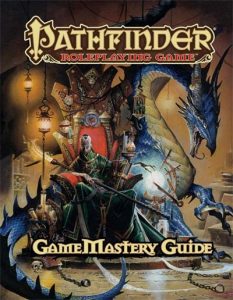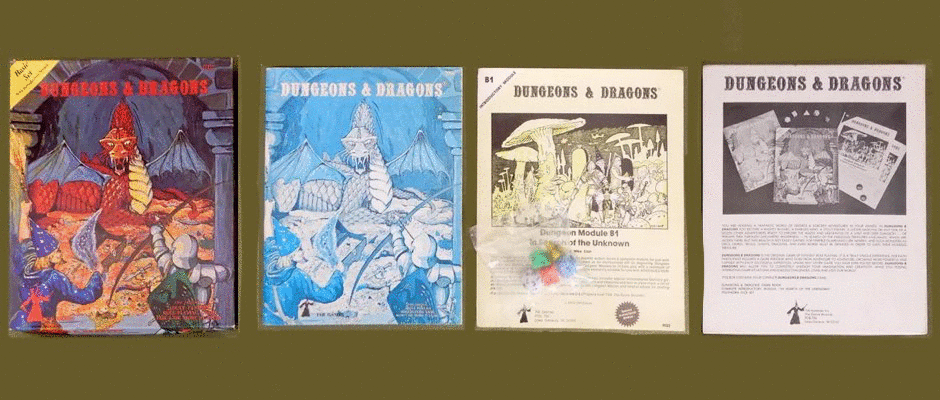
This optional rule book is Paizo’s version of the DungeonMaster’s Guide but is aimed mostly at newcomers and/or starting GMs. I bought it because I’m guilty of being a completist plus there was little for Pathfinder beyond adventures and adventure paths. I did skim it then too. The latter sections were what caught my eye. Now I’m seeing more merit in the book as I’ve been reading GMG at greater length for this post. I should do the same for DMG which I kept; I still reward XP via its Level v. CR table, a couple Prestige Classes were skipped by Pathfinder Core Rulebook and nostalgia.
Chapters 1-3 cover the “science” of being a GM (personally, to me it’s an art, not everyone can do it well, you have to be fearless like public speaking). Demonstrations of how different adventures flow in a linear, non-linear or unrestricted direction. There’s a few pages covering player stereotypes which we all know. Some are multi-classed! Back in Central IL, this one dude was a combination of the Loner (he kept breaking away to have his own personal campaign) and a One-Trick Pony (he would only play an elf with a bow).
Chapter 4 is about NPCs. One cool addition Paizo introduces are Boons; abilities, information, assistance or any other non-monetary way an NPC can aid the players. Examples are favors, discounts and skill usage. Not all NPCs will necessarily offer the Boon for nothing neither. The PCs must reciprocate somehow. GMG gives a page of possible examples from the NPC classes.
Chapter 5 covers rewards with different tables on randomly determining what’s in a treasure pile. These can easily replace what’s in Core.
Chapter 6 is world building. Even if you’re using a published campaign such as The Inner Sea (Pathfinder‘s default), Greyhawk or Forgotten Realms, this fills in the details because those products often just give an overview. What about the weather? Who’s in charge? How about this city?
Chapter 7 gives assistance on making adventures, namely dungeons, aka underground areas where monsters tend to reside. It touches on the Planes (Hell, Astral, etc). Taverns (a staple of Fantasy) get four pages to make every one the players patronize feel a little different. In my game, we have a super detailed tavern/inn acting as a base of operation. Then comes some handy stats on settlements (cities, towns, villages, etc.). The stats help the GM determine how trustworthy the authorities are (if they exist), the strength of the local economy, how accessible knowledge is be it a library or the locals and what the PCs must know, how many possible magic items may be present. The stat block examples are very helpful. The chapter wraps up with water and wilderness-based encounters.
Chapter 8 is about advanced topics which are either things the GM can be blindsided by: drug addiction/drunkenness, natural disasters, gambling and fortune telling/divinations. Then there are the others the GM is prepared for: riddles, traps, haunts, madness and investigations. The latter I find tricky. Why develop detective skills when all you need to do is cast speak with dead to identify the killer.
Chapter 9 closes with an NPC gallery to make the GM’s life easier. Each category contains three NPCs tied to the theme (bandits, crusaders, city watch, caravan, etc.). They’re fully equipped and have an example boon. Paizo has since then used this format and material in several more books called a Codex. I hope to post them too. For me, they’re easy to use as a starting point when I need an NPC/foe in a hurry and Paizo didn’t just phone them in.
GMG is really an optional book in the end. Some of its functions were superseded by later rule books (Ultimate Equipment and NPC or Villain Codex) which may lower its functionality. It recently was released in the $20 pocket version and at that price, I endorse the book. I also need to get re-acquainted with my 3.5e DMG, find some inspiration in the non-rule elements.
